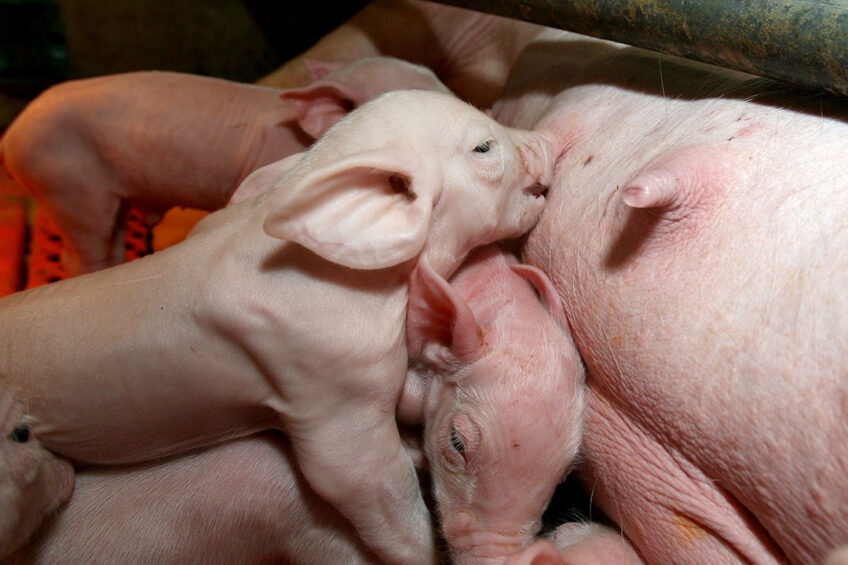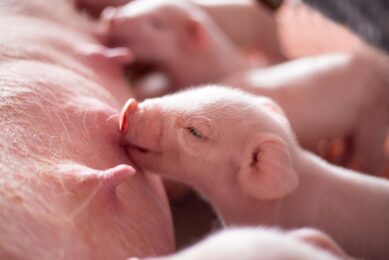Flavour supplementation improves piglet performance and sensory imprinting

Weaning in piglets is a stressful event that leads to low feed intake, compromising their health, performance, and welfare. However, researchers observed improvements in voluntary feed intake, milk production, and piglet weight gain by supplementing lactating sows’ diets with flavouring additives. This dietary enhancement also reduced excessive tissue catabolism and the estrus to weaning interval.
The key to this lies in sensory imprinting, which links the taste of the sow’s diet with the weaner diet. It provides a familiar taste to the piglets, encouraging early consumption of feed at weaning.
A recent study published in the Journal of Livestock Science in June 2023, conducted by researchers from Brazil and England, investigated the impact of adding flavours to the sow diet during lactation. They also evaluated the possible carry-on effect of sensory imprinting on the post-weaning performance of piglets receiving the same flavour.
Red fruit and vanilla flavour supplementation
The study involved 200 Landrace x Large White sows, which were divided into 2 batches of 100 sows each. The sows were assigned randomly to either a control diet or a diet supplemented with a commercial feed flavour containing aldehydes, ketones, and esters. The flavour supplementation was formulated to impart a red fruit and vanilla flavour.
During the entire lactation period, piglets were not offered creep feed. At weaning, 1.680 piglets (840 from each sow treatment) were allocated to 4 different groups based on their origin and diet. These groups were:
piglets from control-fed sows receiving a control starter diet;
piglets from control-fed sows receiving the control starter diet with flavour
piglets from flavour-fed sows receiving the control starter diet
piglets from flavour-fed sows receiving the control starter diet with flavour.
The piglets were fed these treatments from weaning up to day 7 post-weaning. Feed intake was calculated as the difference between the feed allowance and the refusals collected the next morning. The sows were weighed, and their backfat was measured at specific times. The respiratory rate and rectal temperature of the sows were also measured. Farrowing records, such as the total number of piglets born, born alive, stillborn, and mummies, were documented. Additionally, piglets’ individual weights were recorded 24 hours post-farrowing and at weaning to determine litter birth and weaning weights, as well as daily weight gain during lactation. At weaning, the total feed intake in piglets per pen per day was recorded. On day 7, piglets were weighed again to calculate daily gain and feed conversion during this period.
Positive impact on the lactation phase
The introduction of the feed flavour had a positive impact on the lactation phase. It stimulated the oronasal sensing mechanisms in the sows, leading to increased voluntary feed intake. The sows that received the flavour exhibited a higher daily weight gain and consequently higher daily milk production compared to the control-fed sows. Moreover, the control-fed sows had a lower average respiratory rate and rectal temperature when compared to the flavor-fed sows.
Higher voluntary feed intake and average daily weight gain in piglets
Moving on to the nursery phase, piglets from sows that received the feed flavour in their diet and were later exposed to the same sensory additive in the nursery phase showed higher voluntary feed intake and average daily weight gain. They also had a lower feed conversion ratio during the first week post-weaning compared to piglets that were not exposed at any time and piglets that were exposed to flavor only in the nursery.
Prior exposure to flavours
The authors of the study concluded that prior exposure to flavours through the sows’ diet reduces neophobia. This is the reluctance of young animals to ingest unknown food. This exposure also encourages piglets to consume solid food at weaning, thereby improving their welfare, health, and performance. These findings demonstrate that piglets can retain a sensory memory acquired during the lactation phase. A possible cause is the transfer of flavour components via milk or direct contact with the sow’s feed in the trough.











